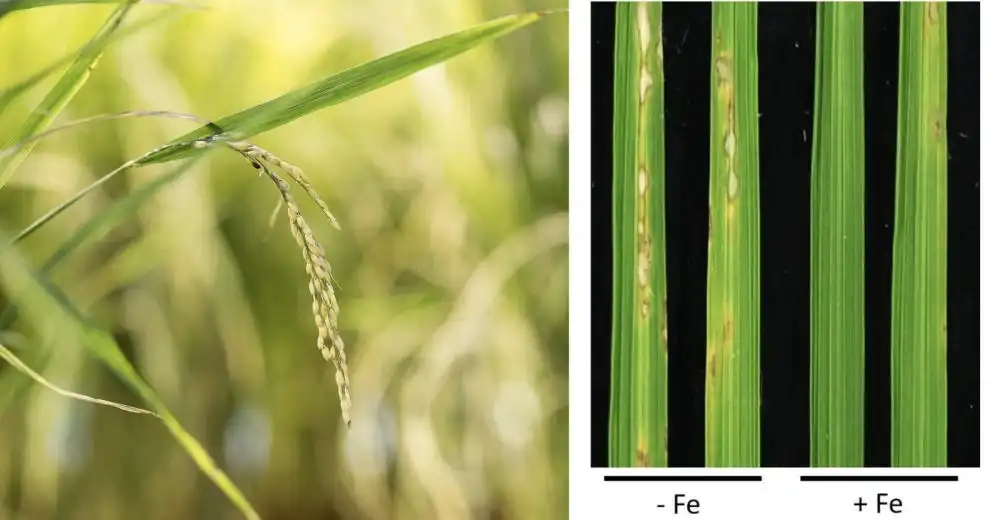CRAG researchers demonstrate that iron treatment increases plant resistance against rice blast fungus
- CRAG researchers demonstrate that iron treatment increases plant resistance against rice blast fungus.
- Iron treatment itself is able to activate the plant’s innate immune response against this pathogen.
- Rice blast has devastating effects on world rice production causing huge economic losses.
Rice (Oryza sativa L) is the world’s most widely used cereal for human consumption and the second most produced in the world after maize. However, rice production is seriously threatened by rice blast, a fungal disease that has been reported in more than 80 countries on all continents, including the growing areas of almost all rice-producing regions in Spain (Andalusia, Extremadura, Catalonia, Valencia, etc.).
A study recently published in the Rice journal and led by Blanca San Segundo, CSIC researcher at CRAG, has revealed that exposing rice plants to moderately high levels of iron increases resistance to infection by the pathogenic fungus Magnaporthe oryzae, the agent causing rice blast, the most common disease in this crop and responsible for large production losses worldwide.
Iron is an essential nutrient for plant growth and development. Although it is an abundant element in most agricultural soils, its availability to crops might be low. Depending on the soil characteristics, iron is found in its insoluble or soluble form, and therefore the plant can absorb it more or less effectively. In addition, both a deficiency and an excess of iron can become toxic to the plant. Thus, the precise control of the amount of iron as well as its biodisponibility turn out to be crucial for the correct growth and productivity of the crops.
Using RNA sequencing methods, which enables the analysis of expression levels of different genes, the research team has detected the activation of several genes related to plant defenses when rice has been treated with iron for a short period of time. In addition, the presence of iron increases the expression of genes related to the generation of phytoalexins, molecules with antifungal activity which are able to inhibit the growth of Magnaporthe oryzae. Thus, it has been possible to demonstrate that a moderate treatment with iron activates the innate immune system of rice.
This work reveals that, under infection conditions, in the leaves of plants treated with iron, an accumulation of both reactive oxygen species (ROS) and iron is observed in specific and very localized regions of the infected leaf, which correspond to the pathogen entry points. This triggers a process of programmed cell death in the plant cells, known as ferroptosis, which limits the progression of the fungus in the infected tissue and therefore the infection is controlled by the plant itself.
«The cell suicide response or ferroptosis has been described in rice varieties resistant to infection by M. oryzae (incompatible interactions). However, it is the first time that this response has been observed in rice plants that are susceptible to infection by this fungus as a result of iron treatment. Iron has a function that enhances the immune response in the rice plant.»,
says Blanca San Segundo, the leading researcher of the study.
Previous studies by the same group already pointed out that nutrients could play a key role in the resistance or susceptibility to infection by this fungus. The same research team published in 2020 that excess of phosphate, as a consequence of the excessive use of phosphate fertilizers, has the opposite effect since it makes rice more susceptible to infection by the same fungus.
Understanding the relationship between the supply of nutrients (macronutrients and micronutrients) and the defense response of the plant against pathogens can be very useful when designing new protection strategies against blast disease and hence minimize the associated economic losses. In addition, this knowledge will contribute to establish more sustainable practices for growing rice by reducing the use of agrochemicals (fertilizers and pesticides).
Read the paper: Rice
Article source: CRAG
Image: Rice plant (left) and rice leaves (right) which have been treated or not with iron (5 days) and infected with the fungus M. oryzae. Credit: CRAG






